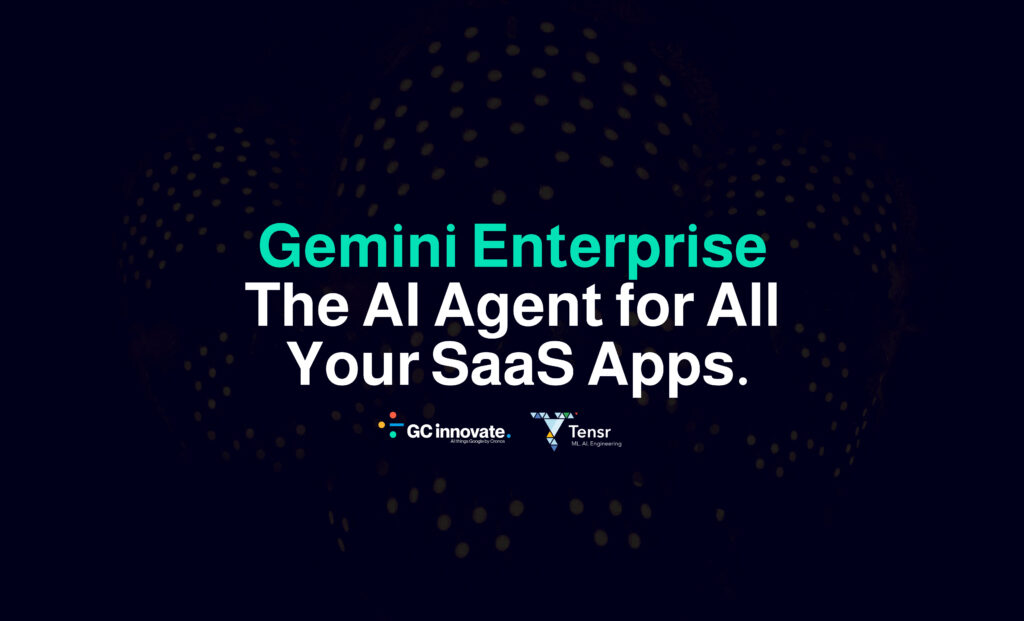Is your current infrastructure starting to feel restrictive? If you’re managing a traditional on-premises virtualization environment, you may encounter some challenges: rising costs, growing complexity, and the sense that your setup isn’t quite keeping pace. Staying put often feels like the simplest option (and sometimes it is), but for others, modernizing their infrastructure is necessary to keep up with competitors.
Once that decision has been made, however, figuring out how to move from a deeply embedded legacy environment to a platform like Google Cloud is easier said than done. It’s not just like flipping a switch, so you need a clear plan. We asked the experts over at FlowFactor to break down a realistic way forward.
Why move to the cloud in the first place?
Sticking with your established virtualization setup often feels like the default choice. It represents years of investment, deeply integrated workflows, and processes your teams know inside out. Making a fundamental shift away from that isn’t a trivial decision. It impacts nearly everything in your IT landscape. So, what pushes organizations to look at alternatives like Google Cloud?
Well, it’s rarely one single catalyst. More often, it’s a combination of factors that gradually highlight where the cloud offers distinct advantages for specific needs. For example, while on-prem can be very cost-effective for stable, predictable workloads, the total cost of ownership can become hard to predict and manage. Or when you’re confronted with the scalability limits of your hardware because of sudden surges in demand, you may want to look at the benefits of cloud elasticity.
How do you start the cloud migration process?
If you do decide to move to the cloud, there’s an obvious first step: an assessment. Here are three things to keep in mind before you start the actual move:
- First, know what you’re moving before you move it. Get a handle on your current workloads, figure out which are critical, and map their dependencies. You can’t plan effectively without a clear inventory!
- Then, define why you’re migrating each piece. Is it cost optimization for that specific workload? Accessing cloud-native services for new features? Or perhaps some workloads are best suited to remain on-prem for now? Pinpointing the goal for each workload will help you choose the right migration path – more on that later.
- Finally, build a realistic business case. Understand the potential gains but also factor in the migration costs and determine the next steps to keep costs under control. A simple lift-and-shift might not save money on day one, so make sure you know the real numbers upfront.
We can’t stress it enough: get this assessment right. It’s the foundation for everything that follows. Don’t hesitate to get a second opinion from an external expert if you feel like your engineers are overestimating the needed effort.
Choosing your migration path
Once you know what you’re moving and why, you need to decide how to move it. There isn’t a single “right” way: the best approach will depend on your application or workload. You’ll probably be looking at one of the three main strategies.
Lift-and-Shift
Think of this as a direct copy-paste. You take your existing virtual machines and workloads and essentially replicate them in the cloud with minimal changes. It’s often the quickest way to get something running on Google Cloud, for example with Google Cloud VMWare Engine. Great for starting with less critical applications to get your feet wet, but keep in mind that it doesn’t automatically optimize for cloud costs or capabilities.
Replatform
This involves making some tweaks and adjustments to your applications so they can better use cloud platform services. Maybe you move an on-prem database to a managed cloud database service like Cloud SQL, or shift existing containers to Google Kubernetes Engine (GKE). It’s a middle ground: more effort than lift-and-shift, but it starts unlocking cloud benefits sooner.
Refactor
This one is the deep dive. You fundamentally re-architect your application to be truly cloud-native, taking full advantage of services like serverless functions or microservices. It requires the most development effort but offers the biggest potential payoff in terms of performance, scalability, and long-term cost efficiency. This is often reserved for core applications you want to modernize significantly.
Mix and match!
Nearly all large migrations aren’t purely one strategy. You’ll likely use a mix: lift-and-shift for some things, replatform others, and perhaps refactor your most critical applications over time. The key is matching the strategy to the specific workload and your defined migration goals from the assessment phase, which might also include identifying workloads that will strategically remain on-premises.
Do’s and don’ts
Choosing your mix of lift-and-shift, replatform, or refactor is crucial, but the real work starts when you begin moving workloads. It’s rarely a simple point-and-click operation. Here are some tips based on our experience.
Don’t try to boil the ocean
The biggest mistake is trying to migrate everything at once in a big bang. That’s a recipe for headaches. Start small. Pick non-critical workloads like development or test environments to migrate first. This lets your team learn the process, build confidence, and work out kinks before tackling the really important stuff.
Automate, automate, automate
Manually migrating hundreds or thousands of VMs is slow, error-prone, and inefficient. Invest time upfront in automation and standardization. Use Infrastructure-as-Code (IaC) tools and templates. The first manual setup will take time, but automating the process means subsequent deployments can happen in minutes, not days.
Bring your people along
Moving to the cloud is as much a people shift as a technology shift. Involve your infrastructure teams early. Provide training and upskilling opportunities. Show them how cloud skills enhance their value, rather than replace them. Often, these new skills can be applied to managing a hybrid environment, blending on-prem and cloud resources effectively. A successful migration needs buy-in!
Security isn’t an add-on
Cloud security works differently than traditional on-prem security. Principles like Zero Trust are standard, but they don’t block everything. Don’t wait until after migration to think about security. Build it into your migration plan and configurations from the start. Otherwise, you’re just asking for trouble.
What are the benefits?
Okay, the migration is underway or complete. You’ve navigated the planning, chosen your strategies, and managed the execution. What’s the payoff? Why go through all this effort? Let’s look at the tangible benefits organizations typically see after moving the appropriate workloads (or their entire environment) to Google Cloud.
Smarter cost management (potentially)
The cloud isn’t automatically cheaper, and many on-prem setups are highly cost-optimized for their specific, stable workloads. But for dynamic needs or to access specialized services without large upfront hardware investment, it offers different and often more flexible cost structures.
More importantly, you gain tools for better cost visibility and control. Being able to use auto-scaling or shut down development environments overnight means you pay for what you actually consume, avoiding idle costs that can be harder to eliminate with fixed on-prem capacity.
True elasticity and scale
This is where the cloud truly offers a distinct advantage. Need to handle a sudden traffic surge for a marketing campaign or a seasonal peak? Google Cloud lets you scale resources up almost instantly and then scale back down just as quickly. This kind of dynamic elasticity is difficult and expensive to achieve with fixed on-prem hardware, which excels at handling known, consistent demands.
No more hardware headaches
For workloads moved to the cloud, managing physical hardware (racking, stacking, patching, cooling, refreshing) disappears. That responsibility shifts entirely to Google Cloud. This frees up your internal teams from routine infrastructure maintenance (“keeping the lights on”) for those cloud-based services and allows them to focus on higher-value activities that directly support the business, both on-prem and in the cloud.
Accelerating innovation
Google Cloud has a great portfolio of managed services, from databases and analytics to AI and machine learning. Integrating these capabilities into your applications becomes significantly simpler when building new solutions or modernizing specific applications in the cloud, compared to trying to build and maintain comparable services on-prem. This allows your teams to experiment and deploy new features faster for those targeted initiatives.
Want to make the move?
Moving from your on-premises setup to Google Cloud is a big step, and it’s not the right move for every workload or every company. But for many, it’s often a necessary one for future growth and efficiency. Don’t get stuck: start smart with a clear assessment and a phased plan. And don’t be afraid to ask for some help!
Ready to modernize your infrastructure without the guesswork? GC innovate brings Google Cloud expertise and practical experience to guide your migration smoothly.





